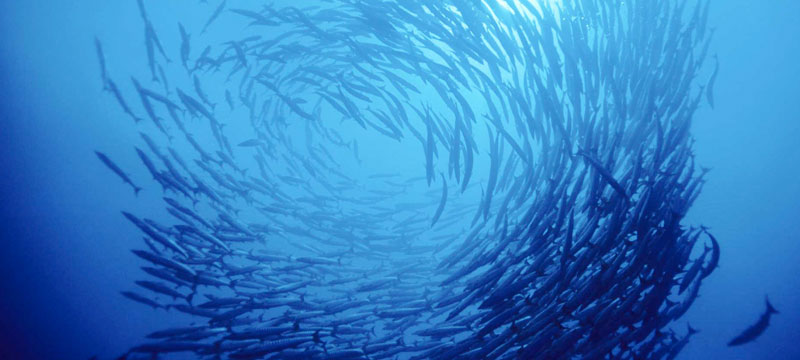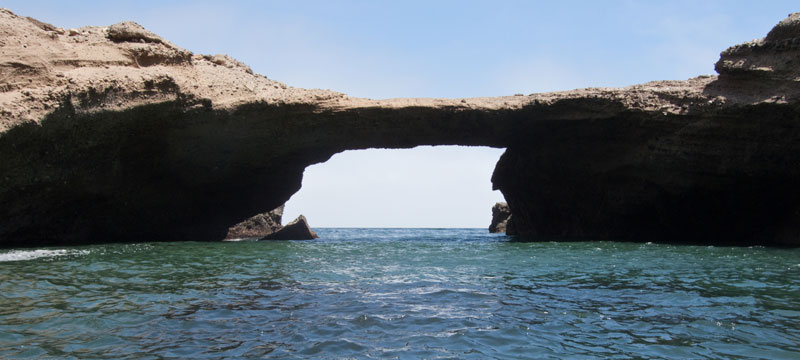Notes from the Center of the Earth

Today we begin the 15th year of the World Ocean Observatory’s initiative to advocate for the sustainable ocean through communications. We began with a big idea and small staff and now years later, while the staff remains the same, we have met many of the ambitious expectations such an idea demands. Through our informational website, syndicated audio, aggregated video, digital magazine, on-line forum, exhibits, educational platform, curriculum catalogue, newsletters and book publications, social media and much more, we reach literally millions of “Citizens of the Ocean” worldwide with our message that “the sea connects all things” and must be sustained for the benefit of all mankind.
Recently we returned from The Economist Magazine Ocean Summit in Cancun, Mexico, where gathered some 400 ocean leaders and decision-makers from the United Nations, national governments, non-government organizations, academic and environmental institutions that embody the most active innovators and implementers of ocean policy, strategies, science and research exploration, and active engagement in the ocean world. It was gratifying and humbling to be among them. I learned much from their direction and accomplishment.

But it also became clear to me that, despite all this good intention and success, progress was being measured in evolutionary, incremental steps and it was hard not to conclude that we were losing ground. There was success to be celebrated, but there remained an underlying urgency -- yes, good things happening, but nonetheless time was running out.
It was not so much what was included in the agenda, but more importantly what was left out. For example, there was no representation of the essential fresh water aspect of the global water cycle of which the ocean plays just one part. Occasionally, there was a brief mention of the coast, as if that edge represented a disconnect with the land and all of its essential implication, both negative and positive, for the future of the sustainable ocean. It was as if half of the world was left out of the conversation, resulting in half a conference, half a policy, half a solution to an interconnected challenge demanding a full, holistic response.
Second, the focus was primarily on the ocean as a natural system violated by waste, plastic, and un-regulated fishing. All true, but it is also simultaneously a financial, political, social, and cultural system – and those perspectives were mostly absent. Given the role of The Economist as a reporter of news and analysis shaped by economics and finance, that omission was notable and ironic. As the emerging concept of ecosystem analysis is an innovative way to expand how we calculate the true value of nature, as the concept of Natural Capital is a new and provocative way of guiding how we invest differently in innovation and measure return, and as the externality costs of activity on land and in the sea must be acknowledged and incorporated into the financial equation, this partial focus was surprising.

Interspersed between predictable expert panels and messages from the President of Iceland and Mexico and the Prime Minister of Norway, there were several presentations by young entrepreneurs with bright ideas who excited us all by their optimism, energy, and commitment beyond mitigation and adaptation to the ocean challenge – to creativity and invention as a path forward. One among them exhorted us to “Think big! Think new! Celebrate success!” Celebrate we did, the successes of the extraordinary expansion of marine protected areas, of public programs to counter the scourge of un-recycled plastic, of coral reef protection, and of new approaches to aquaculture. To think big raised the always difficult issue of scale, and there were some suggestions in that direction regarding expanded observation and data collection, emerging national regulatory structures, and new inter-governmental policies and cooperative agreements.
But to think new is another matter. How? What? Why? After the conference concluded, my wife and I visited the Mayan ruins in Chitzenitsa and afterwards were taken for a swim in a small cenote, an underground limestone cave, a hidden pool part of the aquifer that underlies much of the Yucatan peninsula. We were alone there. A shaft of sunlight angled through the opening above that had collapsed to allow the place to be known and accessible. The inner lining of the curved cave wall was covered with unexpected plants and geologic color caught faceted in the light. The water was absolutely still and absolutely blue. As we swam, I realized that this place was part of a subterranean river system that through seeps and streams in the stone links that fresh water to the sea. We were immersed in the continuum of connection; we were swimming at the center of the earth.
How? What? Why? Questions floating there, and here now, beginning another year of advocating for the ocean as a pervasive source and system for human connection and survival, I am resolved to commit evermore to finding and sharing the answers.
- - -
PETER NEILL is founder and director of the W2O and is author of “The Once and Future Ocean: Notes Toward a New Hydraulic Society.” He is also the host of World Ocean Radio upon which this blog is inspired.
- Login to post comments
-


